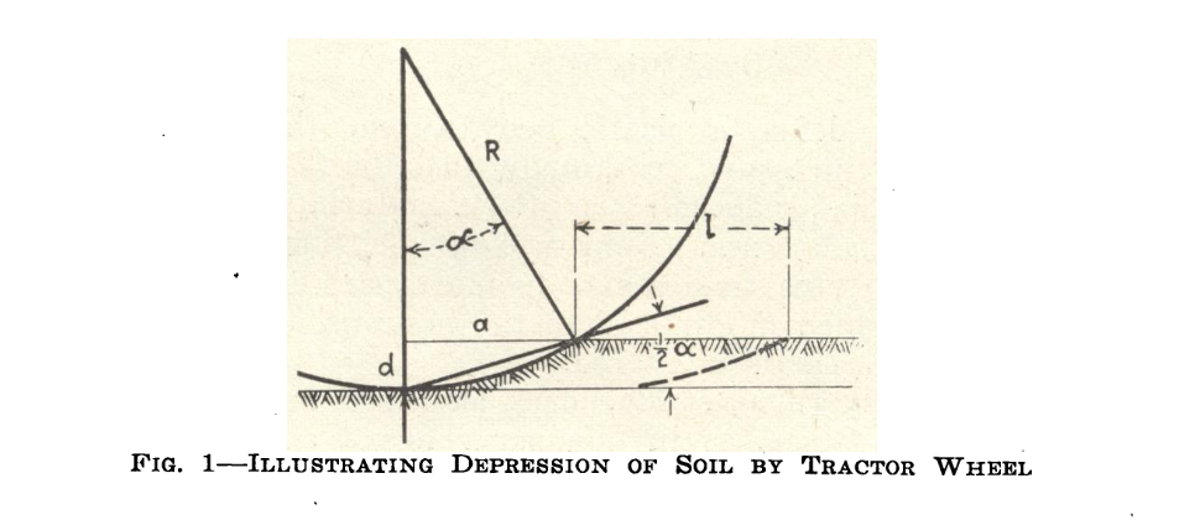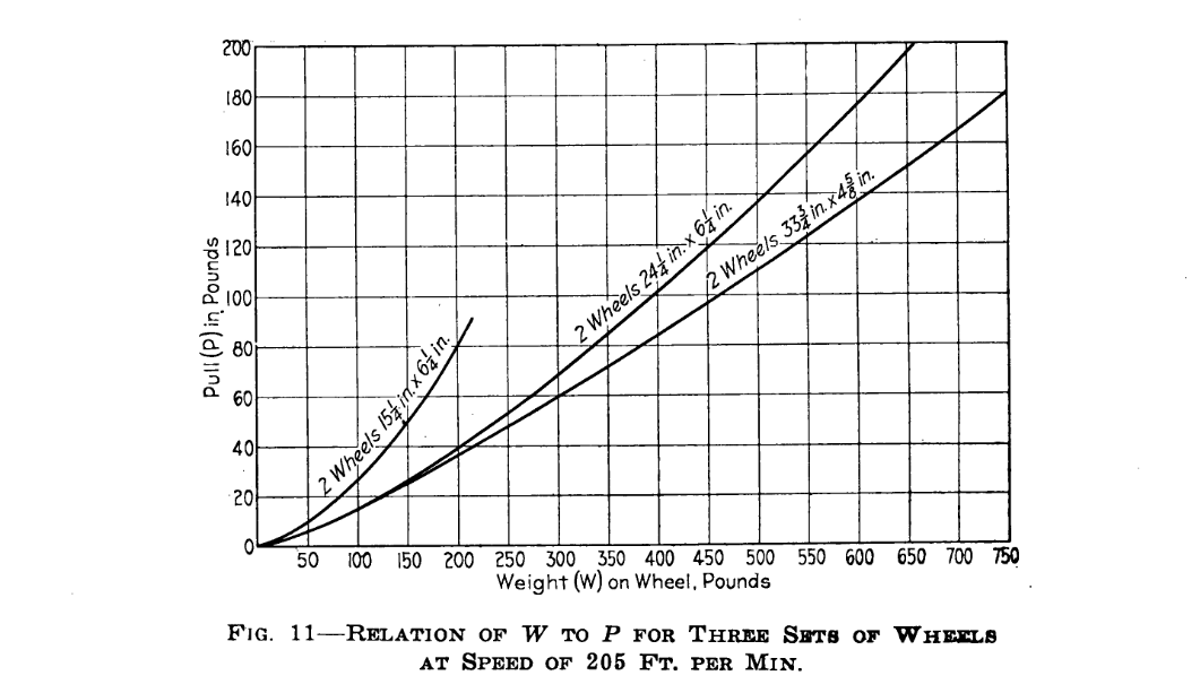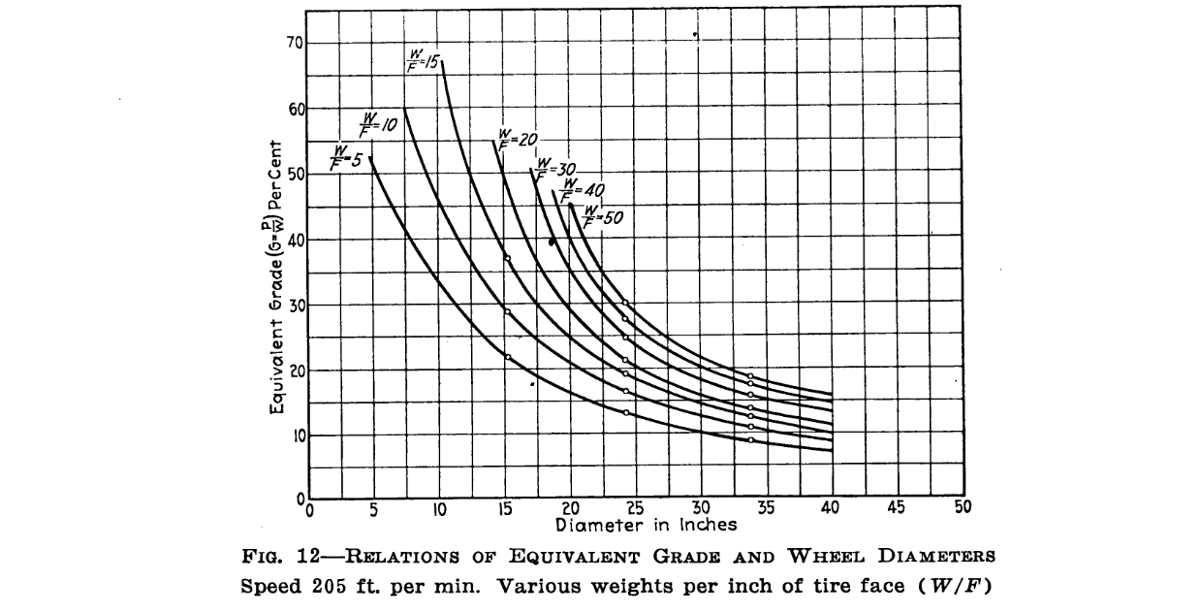The Tractor Paper
If you've spent any time in mountain bike wheel discourse since the 29" tire came out, you've probably heard about "the tractor study". If you haven't, even though 29" wheels are 20 years old and more or less the standard, you'll probably still hear about it since people are still experimenting with even bigger wheels. WTB's recent 750D prototype and the irresistible clickbait of 36ers will keep people talking about how big is too big.
The seemingly apocryphal tractor study was a scientific paper that showed that bigger wheels on tractors were better. But no one who mentioned the paper seemed to know what the paper actually was! Various claims surfaced:
- It was done by the US Army during WWII
- It was done by Soviet researchers
- It showed that bigger wheels were more efficient
- It showed that increases in diameter were more effective than increases in width
I've been searching for this paper for... 20 years now? I've never been able to find any more information about it. I even enlisted a friend who's a professor in agricultural entomology to dig through his databases. Nothing.
Well I think I found it.
It has, shockingly, a very obvious title: "Rolling Resistance of Tractor Wheels". I'm not sure why it never turned up, unless it wasn't digitized and scanned until recently.
In this latest round of searching, I didn't find it directly either despite the title.
The inspiration to hunt again came via the Australian bike company Curve starting a crowdfunding campaign to do a small production run of their 36" bike. This is a bike that only has one dirt tire, courtesy of Walt Wehner of Waltworks working with Vee Tire in 2012. In this interview on Pinkbike, Walt mentions the study being from the Army. Most of my previous research had been academic, so I tried searching again but using some additional keywords that would surface military studies.
This found a bunch of stuff about tanks since they use "tractor treads". But one publication jumped out at me: "The Principles of the Wheeled Farm Tractor" by Edward Hewitt from SAE Transactions written in, wow, 1919.
1919 is right after WWI, could this be it? I scanned the paper, and while it was on the right track, I didn't see anything about wheel diameter. In all the paper had a lot of the right subject manner but there was no evaluation of wheel size.
I found the real paper by breaking the classic rule of the internet - "Don't read the comments".
At the end of the paper is a section called "The Discussion" where other engineers comment on the paper. Here I struck gold.
An A.F. Moyer writes:
I undertook research on the performance of wheels in soft soil about 2 yr. ago, but have been able to experiment only on rolling resistance, although the intention of experimenting on tractive properties of drive-wheels was kept continually in mind. This work is just about to be renewed on a large scale after interruption by special war training of the U. S. Army and Navy in our laboratory.
Bingo, this must be our guy! We even have a reference to the Army, though it sounds like the research was done previously and due to the war they had to switch to doing something else?
Further in the discussion he says:
The statement of the variation of resistance with different wheel diameters would be in general correct if it were amended to read, "varies inversely with the diameter" and not "as the diameter." Such a mathematical relation is only vaguely approximate. The amended clause signifies that as the diameter increases resistance decreases, but the relation involves at least the square of the diameter based on theoretical grounds, and experiment has shown that a still higher exponent ought to be used, as the soil will bear up more per cubic inch displaced under a wheel of large diameter than under one of small diameter.
This is wild to read! That rolling resistance increases by more than a square of wheel diameter puts it up there with aerodynamic drag. But note the mention of displacement - this is about a tractor wheel in soft soil like a freshly tilled field.
This sounds like the research we've been looking for. Searching for A.F. Moyer then brings up "Rolling Resistance of Tractors", also from SAE Transactions.
The paper is primarily looking at the energy requirements of tractor wheels in soft soils. This was vital to making the economic case of why a small farmer should buy one of these new motorized tractors. Much of the paper revolves around understanding more about how a tractor wheel rolls in soil. Moyer models this using the geometry described in this diagram:

Much of this paper is how they experimentally tested the model using a recording dynamometer to generate data that could be then used to better understand how the soil mechanics drive the model.
Later in the paper Moyer gets to wheel diameter and finds in testing that bigger wheels have less rolling resistance but that the behavior starts getting complicated.
... herefore appears that there remains one important law which it is not yet possible to write mathematically, namely, the variation of n with wheel diameter and depth of tillage. When this can be done it will be possible from the foregoing to express a general wheel-resistance formula involving the ordinary variables in a manner convenient for practical use.
It may be that the model is too simple:
In obtaining data on the actual displacement of soil, there was no means at hand for ascertaining the "wave" action in front of the advancing wheel, merely the volumes being calculated which were below the original soil surface.
This seems reasonable that a smaller wheel pushes more of the soil in front of it. Imagine the boat equivalent of a tugboat versus a rowing shell.
So while the mathematics don't quite come to something easily used, he produces these two graphs:

Here we see that the bigger diameter wheel has a lower rolling resistance even though it has a narrower width. This graph is probably where the main 29er talking point of diameter beating width came from.

This graph is estimated from points of data. I'm not sure if W/F can be used to estimate different widths, but at least we see that bigger wheels offer less rolling resistance but there is a diminishing point of return.
Some things to note:
- The "tires" here are hard cylinders, not pneumatic tires and certainly not supple bike tires.
- This models the wheels being pulled along, not driving. This doesn't tell you anything about traction.
- The resistance is in soft soil, not about rolling over rocks and stuff.
- Based on the previous point, this paper is probably more applicable to the 27.5 vs 26 inch fat tire debate.
Is this paper useful today? 29ers seem to have established their place with no sign of the pendulum swinging back except for mullet rear wheels. At least it's good to know what's actually in it. Unlike tractors, we do have to make the wheels fit in the bike and around the rider so the "pros" of going even bigger will come with more "cons".
Since this seems to be "the paper" I haven't looked for other work from Moyer. It's possible more of his work is in the archives of the University of Minnesota. I have a bunch of other articles to finish for Bike Writes but it's something I plan to come back to.
Tags: #wheels